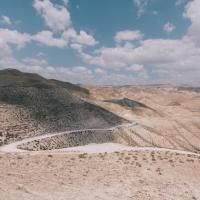Seeking Drought Relief: The Navajo Turn to NASA

- 2019-05-20
- Global Climate Change
Last spring, the arid western edge of the Navajo Nation in Arizona was drier than it had been in many years. Feral and wild horses, dehydrated and malnourished, sought out a watering hole near Gray Mountain. Instead of finding relief, nearly 200 got stuck in muddy clay and perished.
On the Navajo Nation, access to drinking water is limited, more than 40 percent of homes lack running water, and many people haul water over 50 miles by truck to replenish their storage cisterns. But if we want to understand what water, rain and drought mean there, we need to think beyond household use.
Drought has a huge impact on agriculture, threatening the survival of plants and animals alike. McClellan grew up on the reservation with his grandmother, practicing traditional dry farming, which relies on rainfall instead of irrigation and involves a variety of techniques for conserving scarce moisture.
Managing the water resources of the Navajo Nation is particularly difficult. With a population of over 200,000, it is the largest federally-recognized sovereign tribe in the U.S. in land area, located in the four corners region of the southwestern U.S. The Nation experiences frequent and pervasive droughts, with very variable precipitation patterns amid a backdrop of consistently rising temperatures.